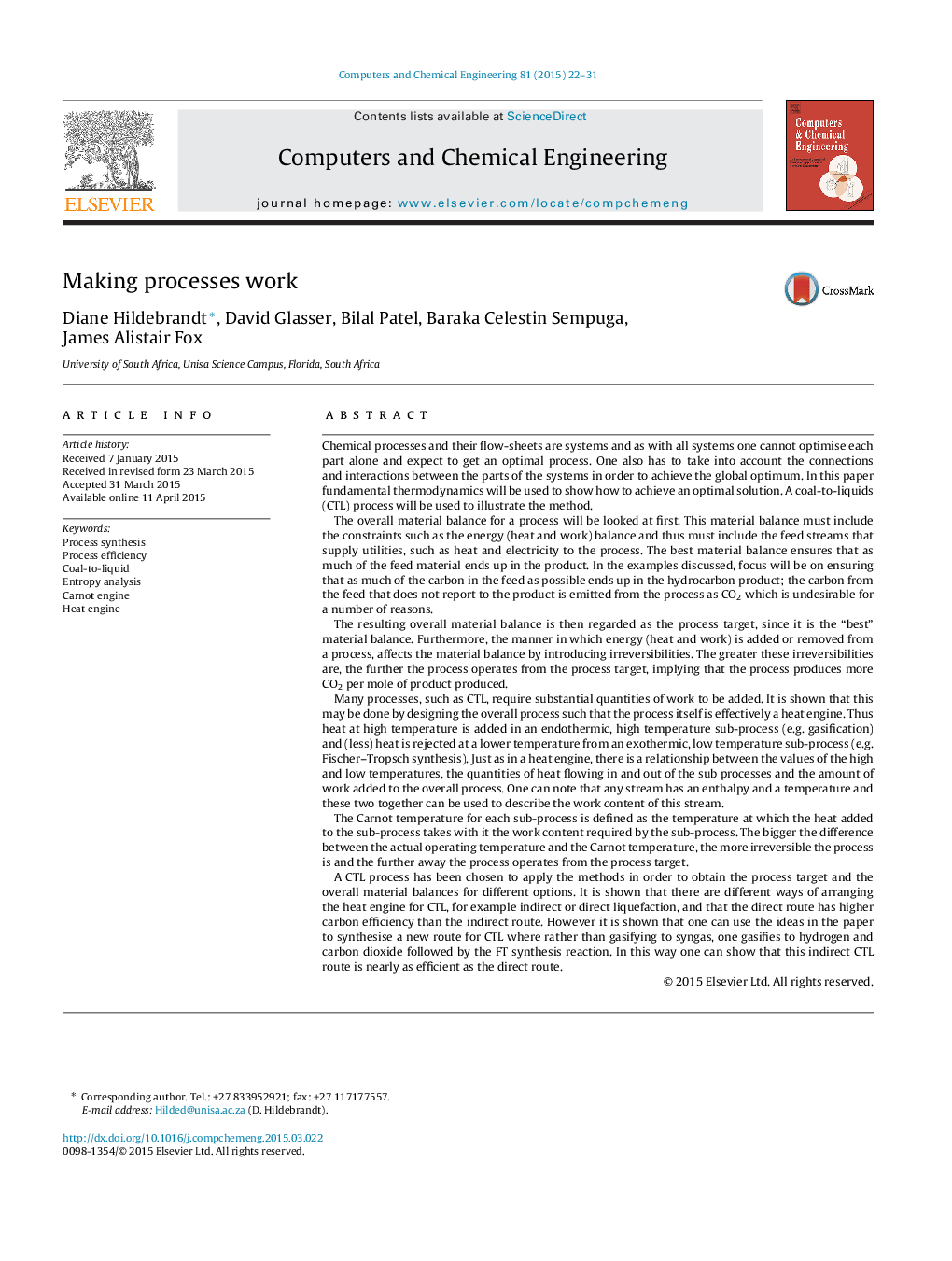| کد مقاله | کد نشریه | سال انتشار | مقاله انگلیسی | نسخه تمام متن |
|---|---|---|---|---|
| 172226 | 458525 | 2015 | 10 صفحه PDF | دانلود رایگان |
• Use of fundamental thermodynamics to analyse carbon efficiency of CTL processes.
• Direct CTL process has the highest carbon efficiency of all CTL processes.
• Indirect CO route CTL process has lower efficiency compared to indirect CO2 route CTL process.
• Carbon efficiency of indirect CO2 route CTL process is nearly as the efficiency of direct CTL process.
Chemical processes and their flow-sheets are systems and as with all systems one cannot optimise each part alone and expect to get an optimal process. One also has to take into account the connections and interactions between the parts of the systems in order to achieve the global optimum. In this paper fundamental thermodynamics will be used to show how to achieve an optimal solution. A coal-to-liquids (CTL) process will be used to illustrate the method.The overall material balance for a process will be looked at first. This material balance must include the constraints such as the energy (heat and work) balance and thus must include the feed streams that supply utilities, such as heat and electricity to the process. The best material balance ensures that as much of the feed material ends up in the product. In the examples discussed, focus will be on ensuring that as much of the carbon in the feed as possible ends up in the hydrocarbon product; the carbon from the feed that does not report to the product is emitted from the process as CO2 which is undesirable for a number of reasons.The resulting overall material balance is then regarded as the process target, since it is the “best” material balance. Furthermore, the manner in which energy (heat and work) is added or removed from a process, affects the material balance by introducing irreversibilities. The greater these irreversibilities are, the further the process operates from the process target, implying that the process produces more CO2 per mole of product produced.Many processes, such as CTL, require substantial quantities of work to be added. It is shown that this may be done by designing the overall process such that the process itself is effectively a heat engine. Thus heat at high temperature is added in an endothermic, high temperature sub-process (e.g. gasification) and (less) heat is rejected at a lower temperature from an exothermic, low temperature sub-process (e.g. Fischer–Tropsch synthesis). Just as in a heat engine, there is a relationship between the values of the high and low temperatures, the quantities of heat flowing in and out of the sub processes and the amount of work added to the overall process. One can note that any stream has an enthalpy and a temperature and these two together can be used to describe the work content of this stream.The Carnot temperature for each sub-process is defined as the temperature at which the heat added to the sub-process takes with it the work content required by the sub-process. The bigger the difference between the actual operating temperature and the Carnot temperature, the more irreversible the process is and the further away the process operates from the process target.A CTL process has been chosen to apply the methods in order to obtain the process target and the overall material balances for different options. It is shown that there are different ways of arranging the heat engine for CTL, for example indirect or direct liquefaction, and that the direct route has higher carbon efficiency than the indirect route. However it is shown that one can use the ideas in the paper to synthesise a new route for CTL where rather than gasifying to syngas, one gasifies to hydrogen and carbon dioxide followed by the FT synthesis reaction. In this way one can show that this indirect CTL route is nearly as efficient as the direct route.
Journal: Computers & Chemical Engineering - Volume 81, 4 October 2015, Pages 22–31
